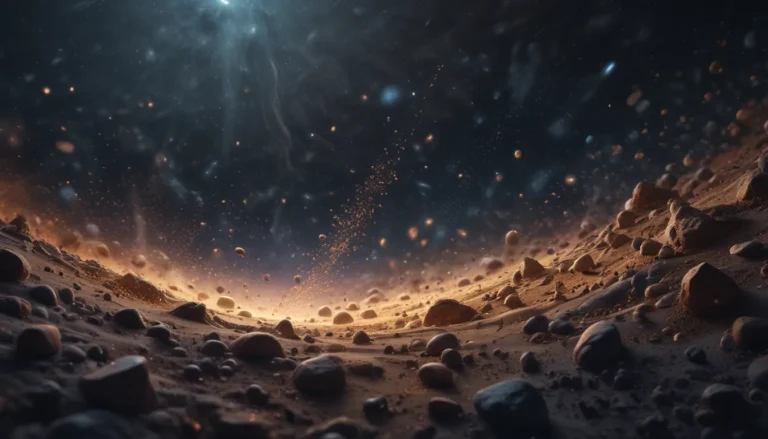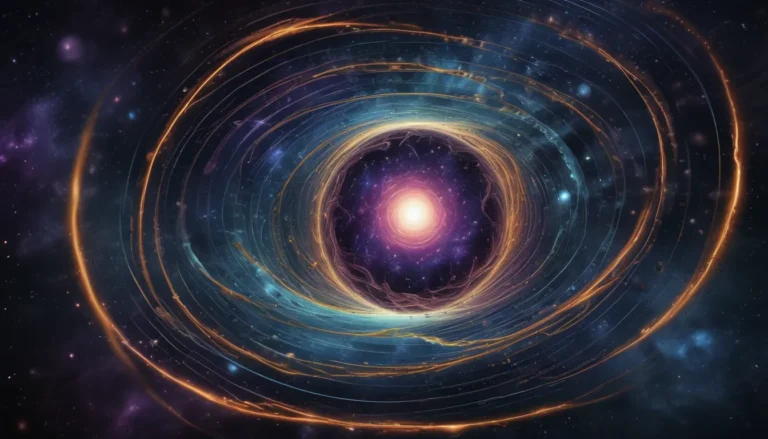The pictures we use in our articles might not show exactly what the words say. We choose these pictures to make you interested in reading more. The pictures work together with the words but don’t take their place. The words still tell you the important facts.
Galactic chemical abundances are like a cosmic recipe that unveils the diverse elements within our galaxy and their fascinating origins through processes like stellar fusion and supernova explosions. These abundances provide invaluable insights into the evolution of galaxies over billions of years, akin to unraveling a captivating cosmic history book. Join us on a journey through the galaxy as we explore ten intriguing facts about galactic chemical abundances that will stretch your cosmic imagination.
The Wealth of Elements Within Our Galaxy
The study of galactic chemical abundances reveals the presence of various elements within our galaxy, including hydrogen, helium, oxygen, carbon, and many more. Each element plays a crucial role in the intricate tapestry of cosmic evolution.
Stellar Fusion: The Cosmic Alchemy
Stellar fusion stands as one of the primary sources of galactic chemical abundances, where stars produce heavier elements through nuclear reactions in their cores. This process is essential for the creation of diverse elements in the universe.
Cosmic Recycling: The Circle of Elements
Galactic chemical abundances are a testament to the continuous recycling of elements in the universe. Supernovae, for example, release enriched materials back into space, contributing to the abundance of elements in galaxies. This cosmic recycling process ensures the sustainability of elements within galaxies.
Unveiling Elemental Fingerprints
Through the analysis of chemical abundances in stars and other celestial objects, scientists can unravel valuable information about the formation and evolution of galaxies. These elemental fingerprints provide insights into the cosmic processes shaping our universe.
The Significance of Metallicity
Metallicity, which refers to the abundance of elements heavier than helium, plays a crucial role in understanding the characteristics and properties of galaxies. The variations in metallicity across galaxies provide valuable clues about their composition and evolution.
Exploring Varying Abundance Patterns
Galactic chemical abundances exhibit different patterns in various regions of the galaxy, offering insights into its structural and evolutionary processes. These patterns hint at the dynamic nature of galaxies and the mechanisms driving their evolution.
The Role of Supernovae in Galactic Evolution
Supernova explosions play a vital role in dispersing heavy elements throughout galaxies, enriching the interstellar medium and facilitating the formation of new stars. These cosmic events shape the evolution of galaxies and contribute to their chemical enrichment over time.
Tracing Chemical Enrichment Across Billions of Years
Through studies of galactic chemical abundances, scientists can trace the gradual enrichment of elements in galaxies over cosmic timescales. This historical perspective provides a deeper understanding of the evolution of galaxies and the vast transformations they undergo.
The Diversity of Stellar Populations
The chemical compositions of stars within a galaxy can vary, giving rise to different stellar populations with distinct abundance patterns. This diversity highlights the complex interplay between stars and the elements that shape their existence within galaxies.
Unraveling the Story of Galactic Evolution
Understanding galactic chemical abundances is essential for unraveling the intricate story of galactic evolution, shedding light on how galaxies have transformed over cosmic timescales. Each discovery in this field brings us closer to understanding the grand tapestry of the universe.
Conclusion: Embracing the Marvels of Galactic Chemical Abundances
In conclusion, exploring galactic chemical abundances is a captivating journey into the composition of our universe. By delving deep into these fascinating facts, we gain valuable insights into the processes responsible for the creation and evolution of elements in the cosmos. The mysteries of galactic chemical abundances continue to inspire awe and fuel our curiosity, promising more astonishing facts and discoveries that enrich our understanding of the cosmos and our place within it.
FAQs: Navigating the Universe of Galactic Chemical Abundances
-
What are galactic chemical abundances?
Galactic chemical abundances refer to the relative abundances of different chemical elements within a galaxy, providing insight into its composition and evolution. -
How are galactic chemical abundances measured?
The abundances of elements in galaxies are determined through spectroscopic observations, where scientists analyze the absorption or emission lines in the spectrum of a galaxy to identify and quantify elements present. -
What is the significance of metallicity gradient in galaxies?
The metallicity gradient reflects the variation in the abundance of elements heavier than hydrogen and helium across a galaxy, offering insights into its formation processes, enrichment history, and dynamic evolution. -
What are r-process elements?
R-process elements are a group of chemical elements primarily produced through rapid neutron capture, forming during cataclysmic events like neutron star mergers. They play a crucial role in understanding the origin of heavy elements in the universe. -
How do galactic chemical abundances impact our understanding of the universe?
By studying galactic chemical abundances, scientists gain insights into the processes involved in the formation of stars, galaxies, and element distribution in the universe. It deepens our understanding of cosmic phenomena and our interconnectedness within the vast cosmos.
Embark on a cosmic journey through the wonders of galactic chemical abundances, where each discovery illuminates the intricacies of the universe and our place within its grand tapestry. Let the allure of cosmic evolution and elemental mysteries guide you as we unravel the secrets of the stars, paving the way for a deeper understanding of the cosmos.






